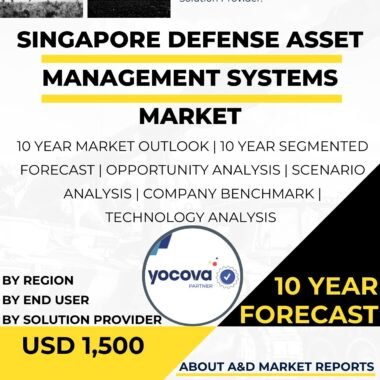Description
Malaysia defense asset management systems market has emerged as a cornerstone of the country’s defense modernization strategy, emphasizing operational readiness, asset reliability, and long-term sustainability. With its strategic location in Southeast Asia, Malaysia faces a complex security environment that necessitates advanced systems for tracking, monitoring, and managing military assets. These assets include vehicles, aircraft, naval vessels, communication networks, and supporting infrastructure. Integrated asset management systems provide the armed forces with real-time visibility, enabling improved situational awareness, minimized downtime, and enhanced mission readiness across all operational domains.
Malaysia Defense Asset Management Systems Market Adoption of Advanced Technologies
The market’s expansion is driven by Malaysia’s focus on data-driven defense operations. Predictive maintenance, sensor-based monitoring, and analytics tools allow for early detection of equipment issues, optimized maintenance schedules, and extended asset life, while reducing operational costs. Collaborations with international technology providers have accelerated the introduction of sophisticated solutions, while supporting technology transfer, local capability development, and workforce training. These partnerships strengthen domestic defense expertise, allowing Malaysia to customize solutions to national requirements and reinforce the growth of its defense industrial base.
Malaysia Defense Asset Management Systems Market Interoperability and Cybersecurity
A critical factor in the market’s development is achieving interoperability across Malaysia’s diverse defense platforms. Integrating legacy systems with modern technologies requires standardized protocols, upgraded infrastructure, and cohesive system architecture. At the same time, cybersecurity remains a major concern, as advanced asset management systems rely heavily on sensitive operational data. Malaysia prioritizes secure communication, resilient networks, and robust data protection to ensure system integrity and uninterrupted operations, safeguarding defense readiness against potential cyber threats.
Malaysia Defense Asset Management Systems Market Training, R&D, and Strategic Importance
Training and workforce development are essential to fully leverage advanced asset management systems, as personnel must interpret complex data, operate integrated platforms, and integrate insights into operational and maintenance planning. Ongoing research and development initiatives, supported by both domestic institutions and international collaborations, allow Malaysia to adapt to emerging technologies and strengthen long-term defense capabilities. The Malaysia defense asset management systems market is thus a strategic enabler of national defense objectives, improving asset availability, operational efficiency, and overall military readiness. By combining modernization, cybersecurity resilience, and local industrial participation, Malaysia continues to build a robust, technologically advanced, and future-ready defense infrastructure.




